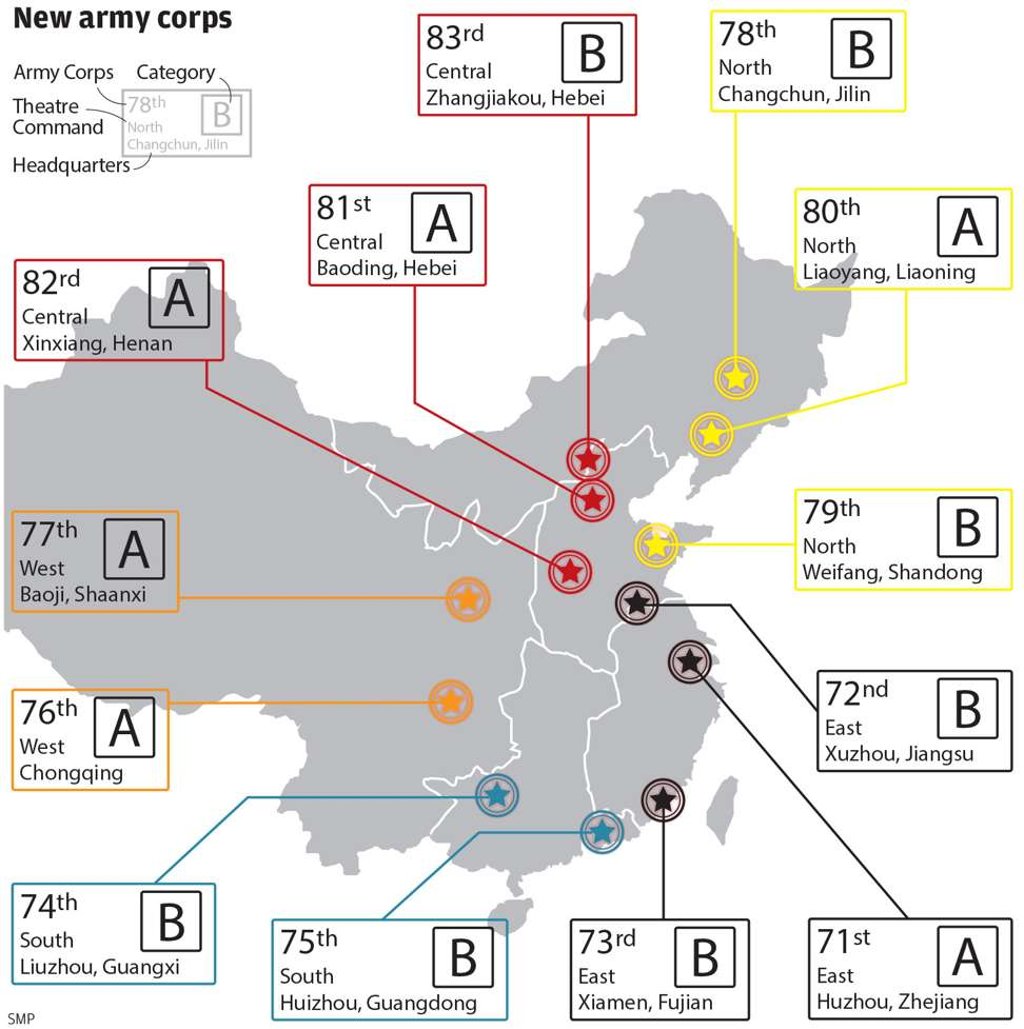Why Xi Jinping is planning a historic move to rename China’s army corps
Corps linked to father and one that defeated US troops in Korea among 13 facing loss of historical unit numbers

Army corps in China’s People’s Liberation Army (PLA) are likely to have their unit numbers changed for the first time in their history as part of President Xi Jinping’s efforts to reshape the world’s biggest army, military sources said.
“Serial numbers for the 13 army corps are likely restart from 71 and end at 83,” a senior retired army officer in Beijing told the South China Morning Post.
The PLA had up to 70 army corps – numbered sequentially from one – when the Communist Party seized power in 1949, but now has just 13 after Xi ordered five disbanded this year.
Corps facing the prospect of being renamed include the 1st Army Corps, which was part of 1st Field Army in which Xi’s father, Xi Zhongxun, served as political commissar during the civil war.
